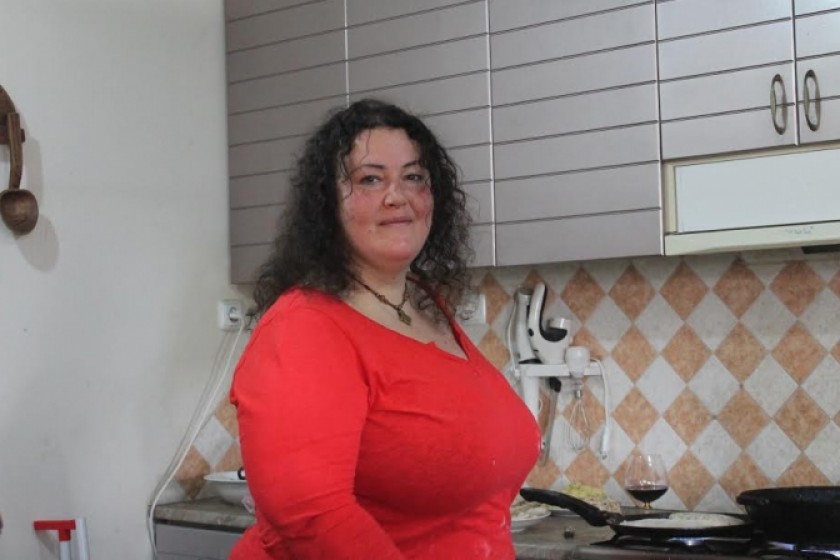
Sevan
Seta Kabranian-Melkonian
In the summer of 1985 the Beirut International airport was once again closed. A group of us, Diaspora Armenian students, decided to meet at my family’s house in Ainjar to travel to Aleppo. From there we would get to Armenia.
It was the last days of August. The drivers lined up in front of our house. One by one my friends showed up. Vahan Naccashian came with his whole family. In the crowd and the pre-travel excitement I noticed the tall girl in blue jeans. Under the sun her hair shined gold.
“Vahan, your sister is cute,” I told my friend later.
“Sevan? Yes, she’s pretty but her size is on the big side,” he said with a brotherly affection.
Being away from our biological families in Yerevan we had formed our de facto family. If we didn’t meet every day, we called each other from hostel to hostel. We spent most weekends together. And during holidays we tried our limited culinary talents to imitate the foods our mothers made.
Following her brother’s steps to study in Armenia, soon Sevan became part of our family.
“Why are you talking at everything? Leave the kid alone,” we teased Vahan. Sevan, I endearingly called her Sevoog, had become our little sister. We didn’t want Vahan’s protective outbursts pressure our sensitive little girl.
By the summer of 1988 our student family was already fragmented. Some graduated and left Armenia, others formed their new families. I moved to the Nairi dormitory in central Yerevan. During that time, our everyday life entered a new phrase, sit-in protest. Sevan was part of it. At any hour of the day we could find her on the stairs of the Opera house or in the vicinity. Due to my proximity, she often came to my room to take a break. Our sensitive girl was turning to a revolutionary in front of our eyes.
When I left for England that summer, my heart stayed behind. Sevan and her best friend Moso (Gorgisian) came together to bid farewell. Moso gave me a thick package of typewritten material. I’d promised I’d mail it to his dissident friends in France.
Almost a year later, at the Zvartnotz airport in Armenia, Hourig and Sevan met me at the Zvartnotz airport in Armenia. Our close friends, Roubik Hakhverdian and Nana Minassian had “adopted” Sevan by then. In their small apartment, there was room for all of us. As it was customary to us, we got together in the kitchens of Nana, and our now late friends Sara Hampartzumian or Rouzan Bandourian. All three of the kitchens were narrow and long, with an enclosed balcony. In all of them warmness reigned.

Now, from my desk in the north of the planet, I transfer to the old days when we didn’t know what malice, jealousy and rivalry were. Our examples were the above mentioned women. And Sevan was one of their best “pupils.”
In April 2015, Hourig, Sevan and I first sat in my kitchen, then in Nana’s and Sevan’s. Sara and Rouzan are eternally absent. But in these homes, in this country, we know we are like ourselves. We are who we want to be.
“Not fair! Some people don’t change at all,” I say with a big smile and hug Sevan. She laughs, that somewhat unfinished, soft laugh.
“Why? You haven’t changed either.”
“What?” I point to my grey hair.
During my two-week-visit we meet almost every day.
“Sev, I’m really proud of you. You’re in such a great place in your life,” I say.
“When are you coming?” she smiles.
The light within, floods around her.
She takes us to her friend’s gallery. We eat Ainjar dishes at the restaurant next door.
Before my departure, I stand in front of her every painting. Our conversations linger. The next day, she comes to me place one of my favorite paintings in her hand. She gifts it to me.
After almost one quarter of a century, from the depth of her soul, a luminous blue and a warm gold spread. And the glow Sevan left stays behind.
 Videos
Videos Photos
Photos




Comments (1)
Write a comment